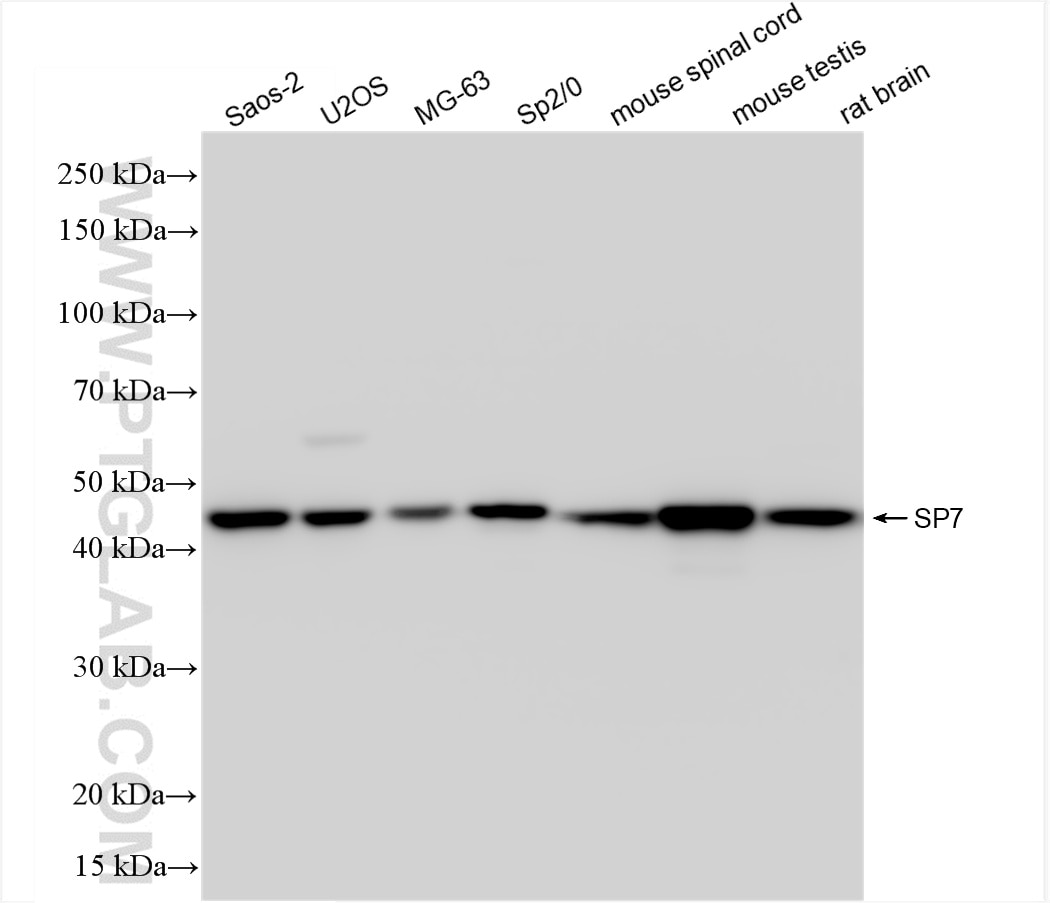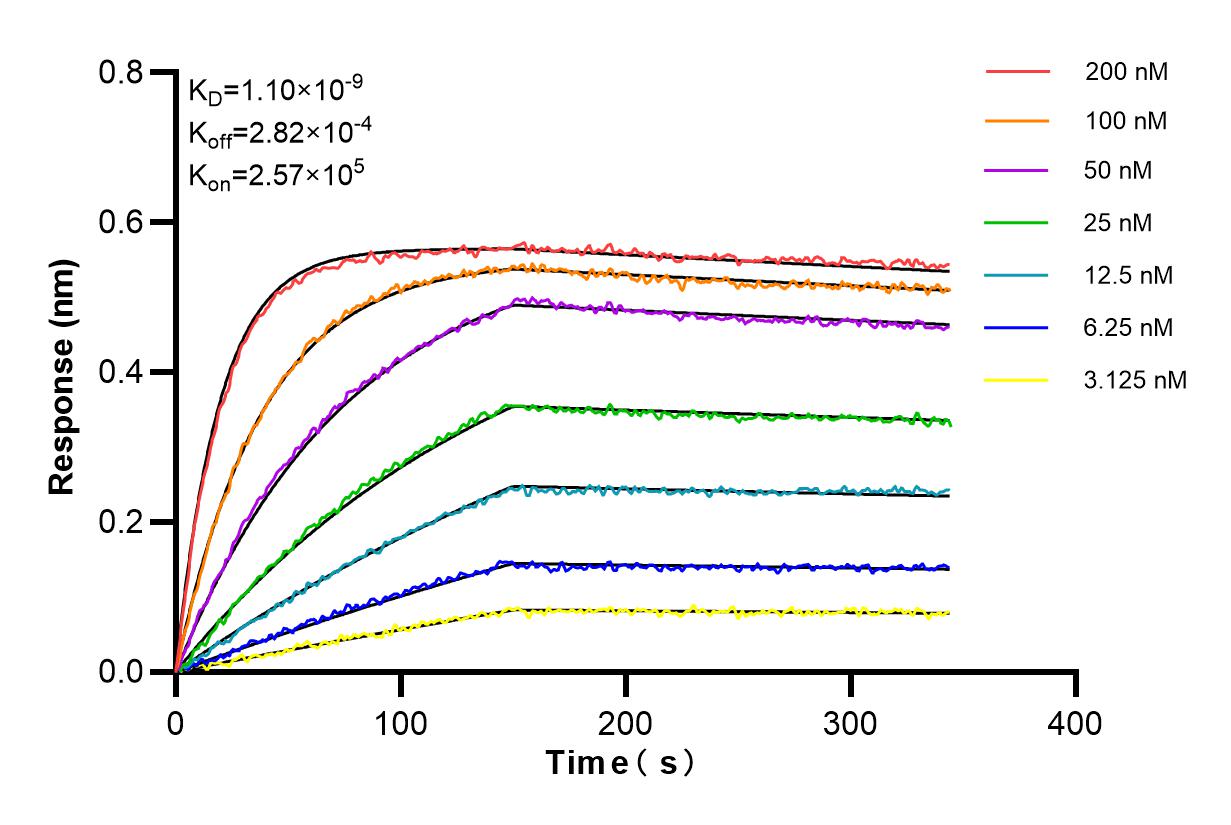Tested Applications
| Positive WB detected in | Saos-2 cells, U2OS cells, MG-63 cells, Sp2/0 cells, mouse spinal cord tissue, mouse testis tissue, rat brain tiisue |
Recommended dilution
| Application | Dilution |
|---|---|
| Western Blot (WB) | WB : 1:5000-1:50000 |
| It is recommended that this reagent should be titrated in each testing system to obtain optimal results. | |
| Sample-dependent, Check data in validation data gallery. | |
Product Information
85934-1-RR targets SP7 in WB, ELISA applications and shows reactivity with human, mouse, rat samples.
| Tested Reactivity | human, mouse, rat |
| Host / Isotype | Rabbit / IgG |
| Class | Recombinant |
| Type | Antibody |
| Immunogen |
CatNo: Ag29889 Product name: Recombinant human SP7 protein Source: e coli.-derived, PET28a Tag: 6*His Domain: 1-179 aa of NM_152860 Sequence: MASSLLEEEVHYGSSPLAMLTAACSKFGGSSPLRDSTTLGKAGTKKPYSVGSDLSASKTMGDAYPAPFTSTNGLLSPAGSPPAPTSGYANDYPPFSHSFPGPTGTQDPGLLVPKGHSSSDCLPSVYTSLDMTHPYGSWYKAGIHAGISPGPGNTPTPWWDMHPGGNWLGGGQGQGDGLQ Predict reactive species |
| Full Name | Sp7 transcription factor |
| Calculated Molecular Weight | 45 kDa |
| Observed Molecular Weight | 45 kDa |
| GenBank Accession Number | NM_152860 |
| Gene Symbol | SP7 |
| Gene ID (NCBI) | 121340 |
| Conjugate | Unconjugated |
| Form | Liquid |
| Purification Method | Protein A purification |
| UNIPROT ID | Q8TDD2 |
| Storage Buffer | PBS with 0.02% sodium azide and 50% glycerol, pH 7.3. |
| Storage Conditions | Store at -20°C. Stable for one year after shipment. Aliquoting is unnecessary for -20oC storage. 20ul sizes contain 0.1% BSA. |
Background Information
Sp7 is identified in several tissues, including bone, tooth, brain, and the reproductive tract (PMID: 11792318, 33135214, 36881265). In bone, Sp7 is expressed at multiple stages throughout the mesenchymal bone lineage and plays different roles in different osteocytes (PMID: 36881265). SP7 regulates osteoblast differentiation and bone formation through osteoblast target genes by recognizing AT-rich region. In osteocytes, SP7 regulates osteocyte maturation and intracortical remodeling through osteocyte target genes by recognizing TGA(G/T) TCA motif. SP7 also regulates chondrocyte differentiation and endochondral ossification (36881265).
Protocols
| Product Specific Protocols | |
|---|---|
| WB protocol for SP7 antibody 85934-1-RR | Download protocol |
| Standard Protocols | |
|---|---|
| Click here to view our Standard Protocols |






